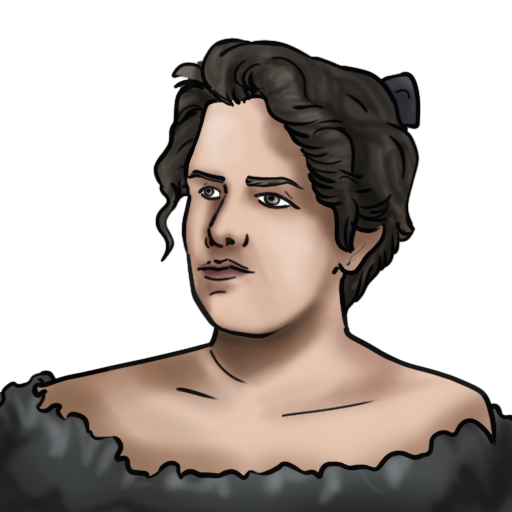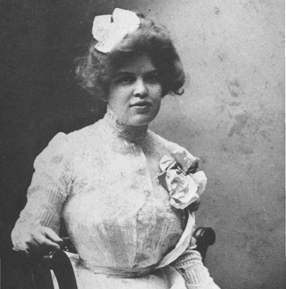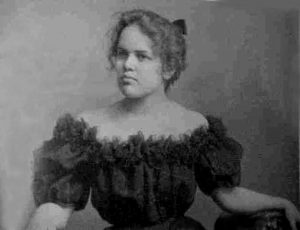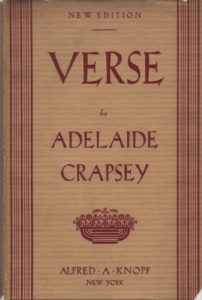
One poet everyone should know about is Adelaide Crapsey. Even though she might not be as famous as some others, her impact in the world of poetry is immense. She invented a unique kind of short poem, called a “cinquain,” that feels like capturing a quick thought or a fleeting moment.

The Life of Adelaide
Adelaide Crapsey was born on September 9, 1878, in Brooklyn, New York. As she grew up, she had a big passion for words. This love took her to places of learning like Vassar College and the University of Wisconsin, where she studied and later taught.
A New Form of Poetry: The Cinquain
Adelaide loved experimenting with words. In her time, she created a new form of poetry called the “cinquain.” The name comes from the Fench word “cinq,” meaning “five” and is pronounced “sin-KANE.” It’s a five-line poem with a specific syllable pattern: 2, 4, 6, 8, and then 2 again. This form lets poets paint a vivid picture or share a deep feeling using very few words.
Imagine capturing the magic of a twinkling star, the rush of a cool breeze, or the thrill of a roller coaster ride in just five lines!
Adelaide’s Poems for Kids
While she didn’t write only for children, the simplicity and beauty of her cinquains can appeal to young readers. They often capture moments in nature, feelings, and thoughts that kids can relate to.
Here’s an example of one of her cinquains:
The Moon
Shining up there
Casting silver below
On forests, cities, and the sea,
Glowing.
The magic of this form is how it invites readers, including kids, to pause and ponder, to feel the emotion or see the picture painted in just a few words.
The Beauty in Brief Moments
One thing that makes Adelaide’s poetry stand out, especially for children, is the beauty she finds in tiny moments. Think about it: our days are filled with little moments, like seeing a butterfly land on a flower, finding a hidden shell on the beach, or watching the sun paint the sky with colors as it sets.
Adelaide’s poems, especially her cinquains, capture these fleeting moments, making them feel grand and significant.
Her Contribution to Children’s Poetry
Adelaide Crapsey’s cinquains have become a favorite exercise for many young poets. Teachers across the world encourage students to try their hand at this five-line form. It’s a wonderful way for kids to start with poetry because it’s short, fun, and offers a neat structure.
In creating the cinquain, Adelaide gave children (and adults) a tool to express themselves, share their observations, and play with words in a new way.
The End and the Beginning
Behind the beauty of her poems, Adelaide had some tough battles. She struggled with health issues, particularly a disease called tuberculosis. This made her think deeply about life, nature, and fleeting moments. In many ways, her health struggles shaped her poems, adding depth and emotion to her words.
Sadly, her life was cut short. She passed away in 1914 when she was only 36 years old. But, as with many great artists and writers, her work lived on. Today, her cinquains are still celebrated and are a testament to her contribution to poetry.
In 1915, one year after her death, her poems, including her cinquains, were published in a collection simply called Verse. Because the book was published so long ago, you can now read it online here.
It’s amazing to think that even after so many years, her tiny poems can inspire big feelings and ideas. They show us that sometimes, the most powerful messages come in the smallest packages.
Remembering Adelaide

Adelaide Crapsey was a true gem in the world of poetry. Through her unique cinquains, she showed that you don’t need a lot of words to make someone feel or think deeply. Her work is a lesson in simplicity, beauty, and the power of observation.
So, if you ever want to capture a moment, a feeling, or a thought, why not try writing a cinquain? You’ll find a simple lesson with instructions and a video here. With just five lines, who knows what magic you can create!
- Enhancing ESL Fluency Through Children’s Poetry - July 24, 2024
- Sensory Poetry Lesson Plan: Bringing Poems to Life Through the Five Senses - July 17, 2024
- The Power of Rhythm: How Poetic Meter Enhances Memory and Recall - July 10, 2024






